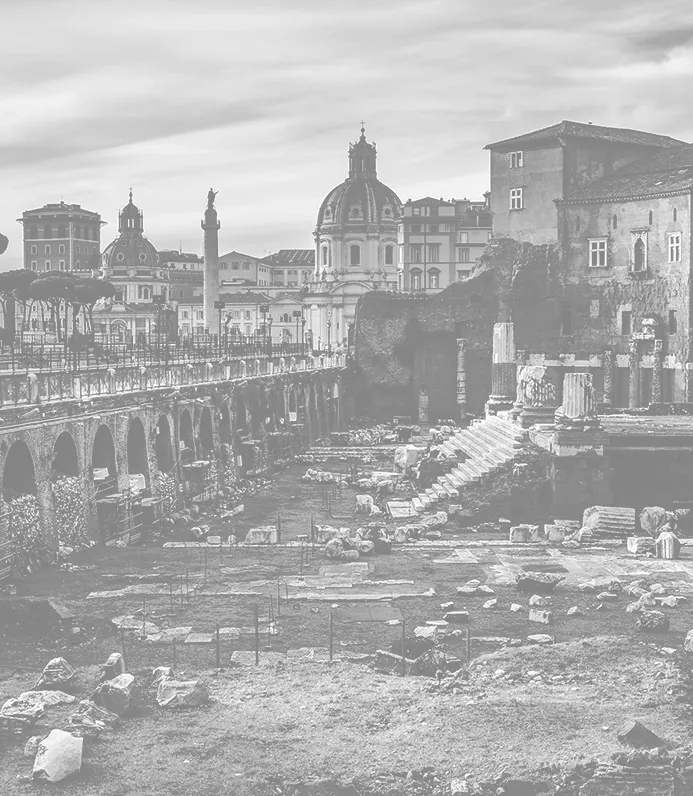安东尼瘟疫
2023-01-09萨拉约曼斯左连凯
文/萨拉·约曼斯 译/左连凯
公元166 年,罗马帝国正在鼎盛时期,国力强大。罗马军团在路奇乌斯·韦鲁斯皇帝的指挥下,在罗马帝国的东部边境击败帕提亚敌军后洋洋得意地回到罗马。他们向西行军到罗马,身上携带的不仅是掠夺帕提亚神庙得来的战利品,还带着将在之后20 年肆虐罗马帝国的流行病,这次疫情将无情地改变罗马世界的格局。这场瘟疫得名“安东尼瘟疫”,传播到罗马帝国的各个角落,很可能在169 年要了路奇乌斯·韦鲁斯本人的命,还可能在180 年夺了其共同执政皇帝马可·奥勒留的命。
2路奇乌斯·韦鲁斯的军队回来以后,时疫在罗马帝国快速蔓延,这在几位同时代观察家的著述中得到证实。名医盖仑本人不止一次,而是两次置身于瘟疫。166 年,瘟疫首次暴发时,盖仑就在罗马,但他的自我防护意识显然胜过对科学的好奇心,他躲到自己的家乡帕加马城。他临时离开没有多久,168 年瘟疫依然猖獗,两位皇帝又将他召回罗马。

3瘟疫对罗马军队的影响显然是毁灭性的。与感染的战友密切接触加上生活条件欠佳,都使瘟疫得以迅速在各个军团蔓延,如驻扎在阿奎莱亚北部边陲的军团。冬季,瘟疫在整个兵营肆虐时,两位皇帝及御医盖仑都在阿奎莱亚的军团。两位皇帝被迫逃回罗马,留下盖仑照管军队。罗马帝国其他地方的军团也遭受了类似的打击;埃及征募士兵之子以扩充其日益缩小的军队;巴尔干地区的军人退伍证说明,瘟疫期间获批退伍的士兵数量急剧减少。
4显然,瘟疫对民众的影响也很严重。174 年或175 年,马可·奥勒留致信雅典,放宽了对成为战神山议事会(雅典执政委员会)委员的要求,因为当时雅典没有多少幸存的上流人士能满足他在瘟疫暴发前制订的要求。埃及俄克喜林库斯城和法尤姆城的纸莎草纸税务文件表明,埃及的城市人口急剧减少;这两座城市的管理者不是没有注意到,死亡加上后来恐慌的幸存者出逃,极大地影响了他们的税收。在罗马本土,马可·奥勒留(路奇乌斯·韦鲁斯去世后,成为罗马帝国的唯一统治者)遭遇围困的同时,还要抵抗马科曼尼人从帝国北方边境的入侵、萨尔马特人从东部边境的侵略和波及整个帝国的传染病。罗马的碑文和建筑证据显示,民用建筑项目虽是二世纪罗马强劲经济的一个重要部分,却从166年到180 年实际上停滞不前。同期,伦敦的民用建筑项目也出现了类似的停顿。
5考古和文本证据有助于我们了解安东尼瘟疫对罗马帝国各个地区的影响,那么,安东尼瘟疫是什么?
6盖仑遗留下来的病案描述了一种危险的病毒性疾病,其症状和病程进展表明,至少有一种甚或两种天花病毒。据迪奥·卡西乌斯描述,189 年一场特别致命的瘟疫期间,仅罗马每天的死亡人数就多达2000人。据估计,安东尼瘟疫肆虐的23 年间,有7%—10%的人口死于该病;在军人和人口更稠密城市的居民中,这个比例可能高达13%—15%。除了瘟疫带来的实际后果,如罗马军事和经济的动荡,瘟疫对各个人群的心理影响也必定无比巨大。不难想象,古罗马人面对如此残酷、痛苦、致人毁形且往往致命的疾病时,一定很恐惧无助。
7那么,这就不难理解,由于安东尼瘟疫,宗教习俗也发生了明显变化。虽然民用建筑项目停止了,但祭祀场所和仪式专用道的建设加强了。无论是古代还是现代,人类在恐惧时以及在死亡即将来临时,往往更乐意接受神的眷顾。即使在当今美国,虽然办公楼里很少有礼拜处,但几乎每家医院都有一个。古罗马人在不明原因且无可救药的疫情面前似乎向神求助了。但众神步履缓慢,又过了1800 年,天花病毒才终于绝迹。 □
The year was 166 C.E., and the Roman Empire was at the zenith of its power. The triumphant Roman legions,under the command of Emperor Lucius Verrus, returned to Rome victorious after having defeated their Parthian enemies on the eastern border of the Roman Empire.As they marched west toward Rome, they carried with them more than the spoils of plundered Parthian temples; they also carried an epidemic that would ravage the Roman Empire over the course of the next two decades, an event that would inexorably alter the landscape of the Roman world. The Antonine Plague1现代对罗马二世纪瘟疫的这个称谓源于时任皇帝的朝代名。马可·奥勒留及其共同执政皇帝路奇乌斯·韦鲁斯都是安东尼家族成员。, as it came to be known, would reach every corner of the empire and is what most likely claimed the life of Lucius Verrus himself in 169—and possibly that of his co-emperor Marcus Aurelius in 180.
2Thepestilentialthat swept through the Roman Empire following the return of Lucius Verrus’s army is attested to in the works of several contemporary observers. The famous physician Galen found himself in the middle of an outbreak not once, but twice. Present in Rome during the initial outbreak in 166,Galen’s sense of self-preservation evidently overcame his scientific curiosity,and he retreated to his home city of Pergamon. His respite didn’t last long; with the epidemic still raging, the emperors called him back to Rome in 168.
3The effect on Rome’s armies was apparently devastating. Close proximity to sick fellow soldiers and less-than-optimal living conditions made it possible for the outbreak to spread rapidly throughout the legions, such as those stationed along the northern frontier at Aquileia2意大利北部的古罗马城市。. Both emperors and their attendant physician Galen were present with the legions in Aquileia when the plague swept through the winter barracks, prompting the emperors to flee to Rome and leave Galen behind to attend to the troops. Legions elsewhere in the empire were similarly stricken; military recruitment in Egypt drew upon the sons of soldiers to augment their shrinking ranks,and army discharge certificates from the Balkan region suggest that there was a significant decrease in the number of soldiers who were allowed to retire from military service during the period of the plague.
4The effect on the civilian population was evidently no less severe. In his letter to Athens in 174/175, Marcus Aurelius loosened the requirements for membership to the Areopagus (the ruling council of Athens), as there were now too few surviving upper-class Athenians who met the requirements he had introduced prior to the outbreak. Egyptian tax documents in the form of papyri from Oxyrhynchus3开罗西南约160 公里处的上埃及城市。and Fayum attest to significant population decreases in Egyptian cities; it did not escape the attention of the cities’ administrators that mortality and the subsequent flight of fearful survivors substantially impacted their tax revenues. In Rome itself a beleaguered Marcus Aurelius (who, after the death of Lucius Verrus, became the empire’s sole ruler) was simultaneously contending with a Marcomannic44 公元前100 年后定居在缅因河谷的日耳曼部落。invasion on the empire’s northern frontier, a Sarmatian invasion on its eastern frontier and an empire-wide pandemic. Epigraphic and architectural evidence in Rome indicate that civic building projects—a significant feature of second-century Rome’s robust economy—came to an effective halt between 166 and 180. A similar pause in civic building projects shows up in London during the same period.
5Archaeological and textual evidence help us paint a picture of the impact of the Antonine Plague in various regions of the Roman Empire, but what was it?
6Galen’s surviving case notes describe a virulent and dangerous disease, the symptoms and progression of which point to at least one—if not two—strains of the smallpox virus. Dio Cassius describes the deaths of up to 2,000 people per day in Rome alone during a particularly lethal outbreak in 189. It has been estimated that the mortality rate over the 23-year period of the Antonine Plague was 7–10 percent of the population; among the armies and the inhabitants of more densely populated cities, the rate could have been as high as 13–15 percent. Aside from the practical consequences of the outbreak, such as the destabilization of the Roman military and economy, the psychological impact on the populations must have been substantial.It is easy to imagine the sense of fear and helplessness ancient Romans must have felt in the face of such a ruthless, painful,disfgiuring and frequently fatal disease.
7It is not difficult to understand, then,the apparent shifts in religious practices that came about as a result of the Antonine Plague. While civic architectural projects were put on hold, the building of sacred sites and ceremonial ways intensified.Human beings, both ancient and modern,tend to be more open to considerations of the divine in times of fear and in the face of imminent mortality. Even today in modern America, while a place of worship is rare inside an office building, there is one in almost every hospital. It seems that the ancient Romans, in the face of an inexplicable and incurable epidemic,turned to the divine. But the gods moved slowly—it would be another 1,800 years before the smallpox virus was finally eradicated. ■
